Art at the L
OVERVIEW
From January to June 2023, 24 user experience design students collaborated in small teams – and worked closely with DePaul Art Museum (DPAM) staff and under the mentorship of Professor Lien Tran – to conduct design research, brainstorm, ideate, and prototype solutions to identify and design solutions to help DPAM connect people through art and ideas that explore the vast range of human experience and expression.
The result is Art at the L, 5 projects designed specifically to enhance the awareness of DePaul Art Museum as an award-winning, inclusive international museum to the DePaul, Lincoln Park, and Chicago communities and designing new ways for the museum to engage in museum education, on-site, nearby, and virtually. The scope of the design brief included increasing awareness of and also bringing in more visitors into the art museum.
DePaul University’s B.S. in User Experience Design capstone course engages students in design scenarios in connection with an organization, initiative, or creative project. Students work in groups to assess project needs, apply research methods, generate ideas, develop and test prototypes, and implement solutions, all from a human-centered design approach.

ABOUT DPAM
DePaul Art Museum (DPAM) is a top-tier museum located on DePaul University’s main campus in Lincoln Park neighborhood of Chicago. It boasts a permanent collection of over 3,500 artifacts, emphasizing modern and contemporary art from around the world. The museum also offers free public access with three to five temporary exhibitions every year.
Project Scope
DePaul Art Museum (DPAM)’s purpose is to connect people through art and ideas that explore the vast range of human experience and expression. With a focus on social justice and artistic innovation on a local and global scale, DPAM aims to create spaces that allow us to learn how to productively and civilly negotiate difference, understanding, and the unfamiliar. Furthermore, DPAM is “connecting people through art and ideas, while promoting the voices of marginalized artists and communities.”
“The arts” are found in a broad array of experiences including artistic disciplines from visual art, theater, dance, to classical/contemporary music – as well as at the intersections and beyond. They differ widely in genre, setting, and medium. However, all art experiences are focused on engaging audiences in a form of creative expression in some capacity.
The arts have struggled in recent years to find ways to engage audiences. In this project, we aimed to look at what arts organizations are doing with experiences they currently produce and see where there are strengths but also opportunities to bring in design, technology, interactivity and games, or other forms of innovation for more effective outcomes specifically at DPAM.
Solutions
Each of the 5 student-led teams crafted a unique experiential solution to the museum’s needs. In particular, the teams sought out to enhance existing structures and technologies within the museum, and prioritized community engagement and social justice initiatives of the DePaul Art Museum.
Students utilized a variety of mediums in their solutions, including: virtual reality, augmented reality, paper postcards, games, and exterior building elements. These projects encompassed many areas to engage, inspire, and promote art at the DePaul Art Museum.
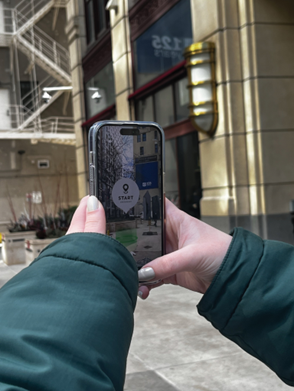
DPAM[AR]
Visitors to DePaul’s Quad at Lincoln Park can engage in a self-guided, augmented reality journey through DePaul’s Lincoln Park campus, unveiling hidden gems from the DPAM’s collection and fostering cultural education.
By utilizing AR, the project showcases off-view artworks from the DePaul Art Museum’s esteemed permanent collection, emphasizing works created by artists from underrepresented communities. The experience begins with a simple QR code, which users scan to unlock the ‘ARt’ exhibit.
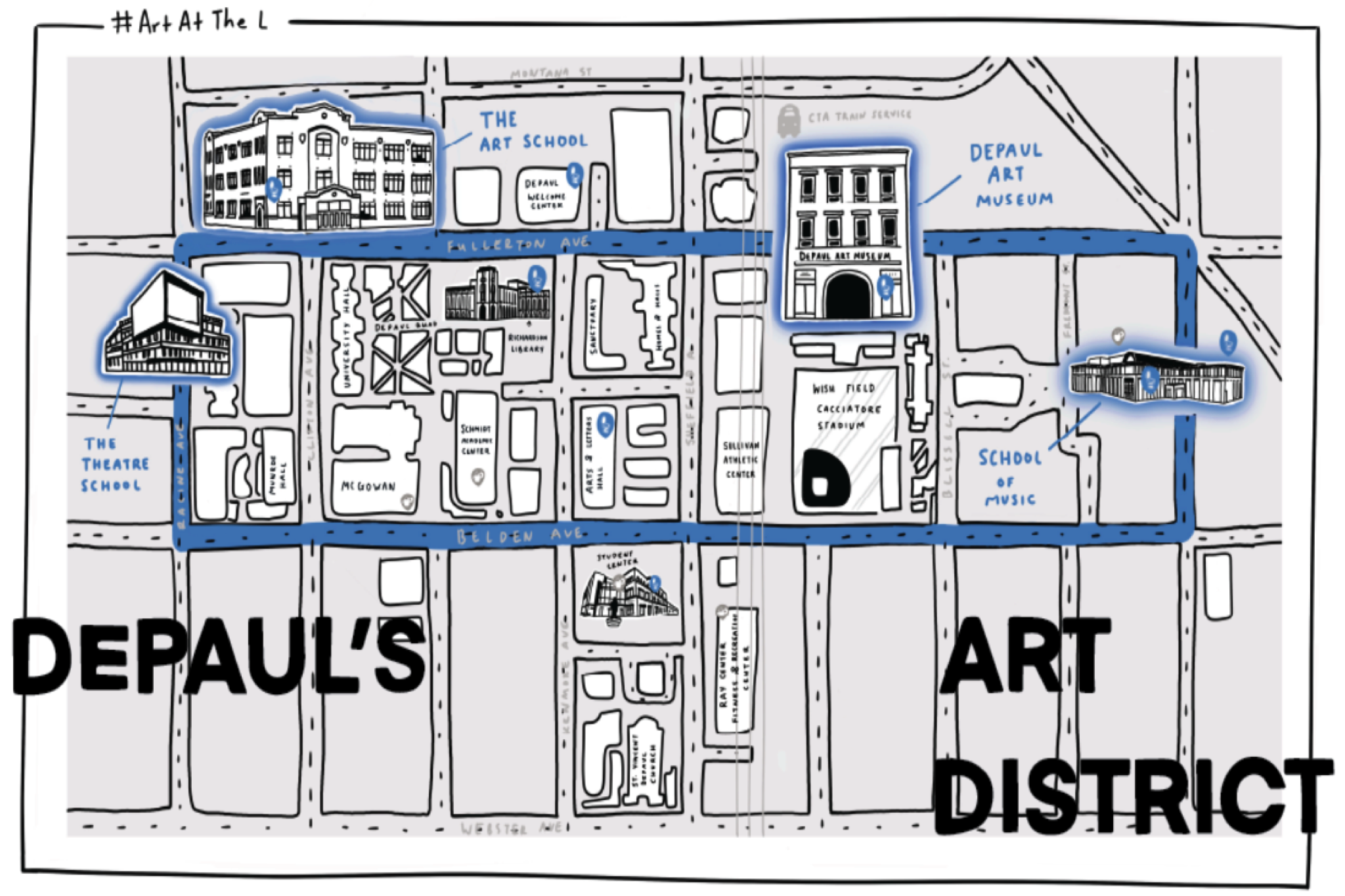
Physical Takeaways
The team designed and developed a standalone kiosk that lets users create their own postcard using photos and artwork from DPAM’s permanent collection and the DePaul Arts District. We also created a walking tour map that visually shows visitors the parts of the Arts District - the Music School, Theatre School, Art School, and DPAM - as well as information about upcoming performances and exhibitions. Our goal is to help engage audiences at DPAM by spreading awareness and excitement about the art on and around campus both by students and professionals.
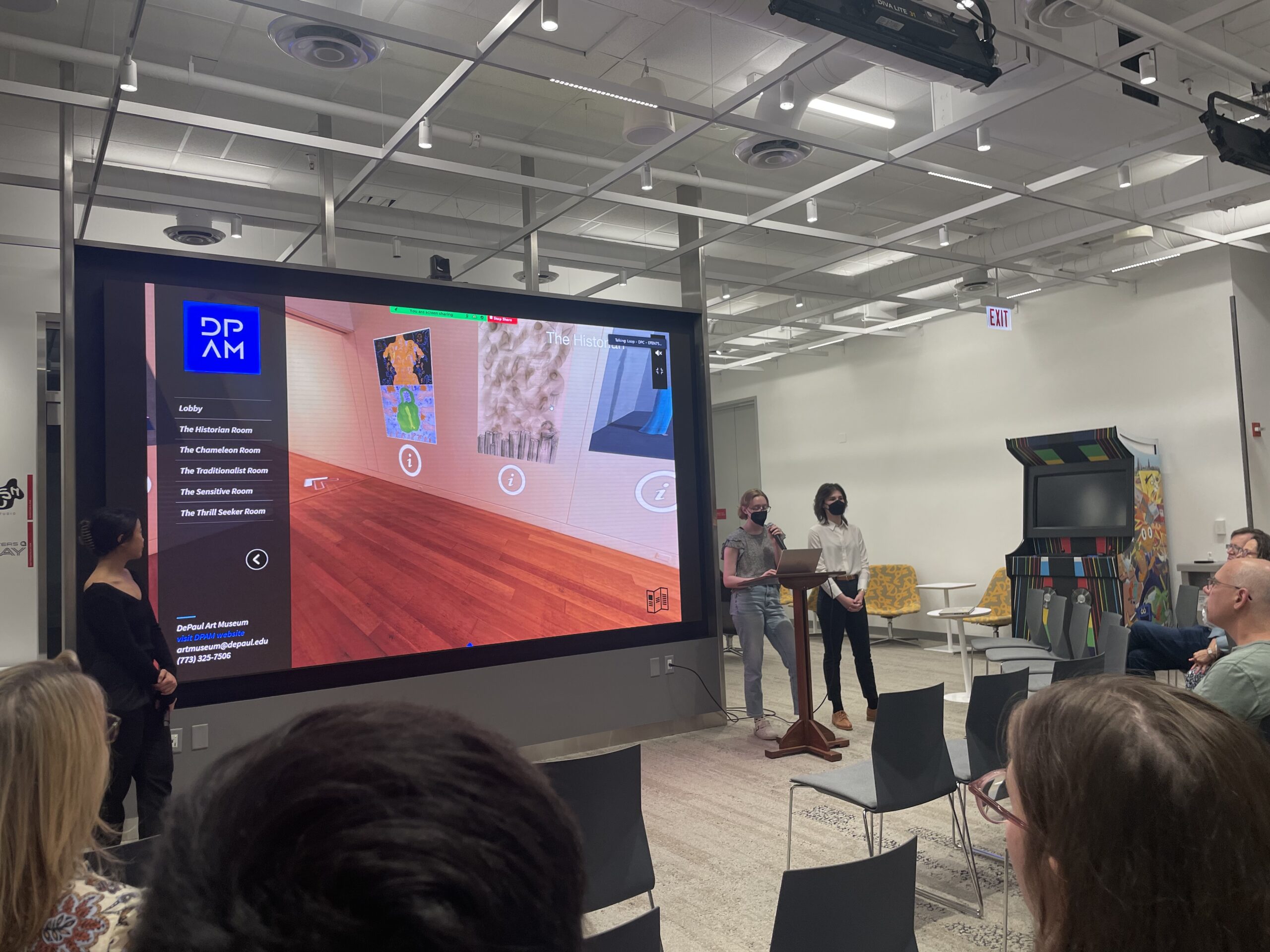
DPAM Virtual Tour
Students created a virtual tour to allow visitors to explore art from DPAM’s permanent collection anywhere, anytime, via a desktop browser. The team also designed - with content help from DPAM interns - an optional personality quiz that would begin the tour in the related gallery.
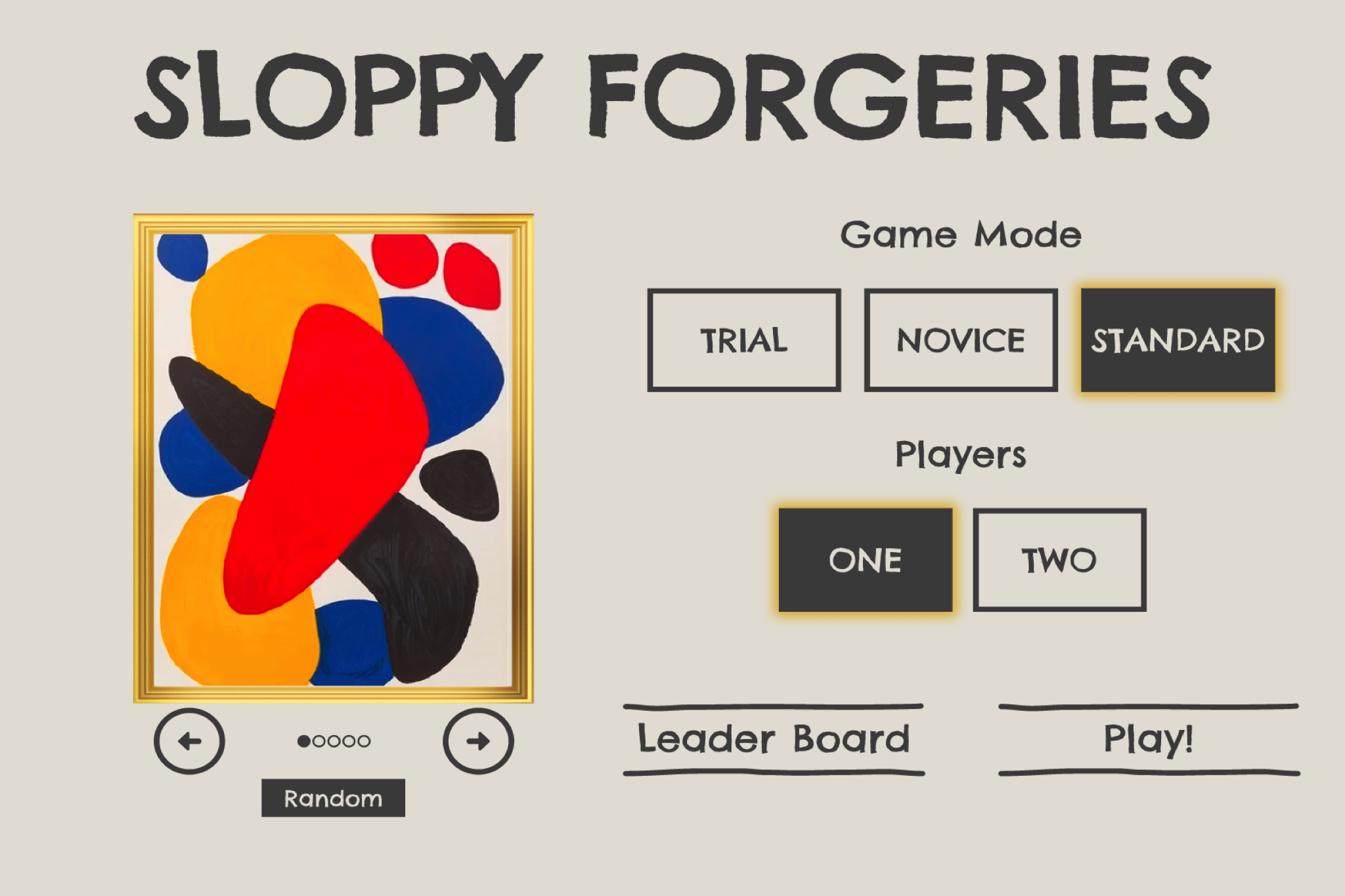
Sloppy Forgeries, DPAM Edition
Students focused on providing an interactive in-person experience within the museum that would allow guests to explore DPAM's permanent collection through customizing a DPAM version of the digital game Sloppy Forgeries, created by Jonah Warren. They set out to update the game for a physical implementation within DPAM that would create a competitive environment, allow for new learning experiences, and encourage a return visit to DPAM.
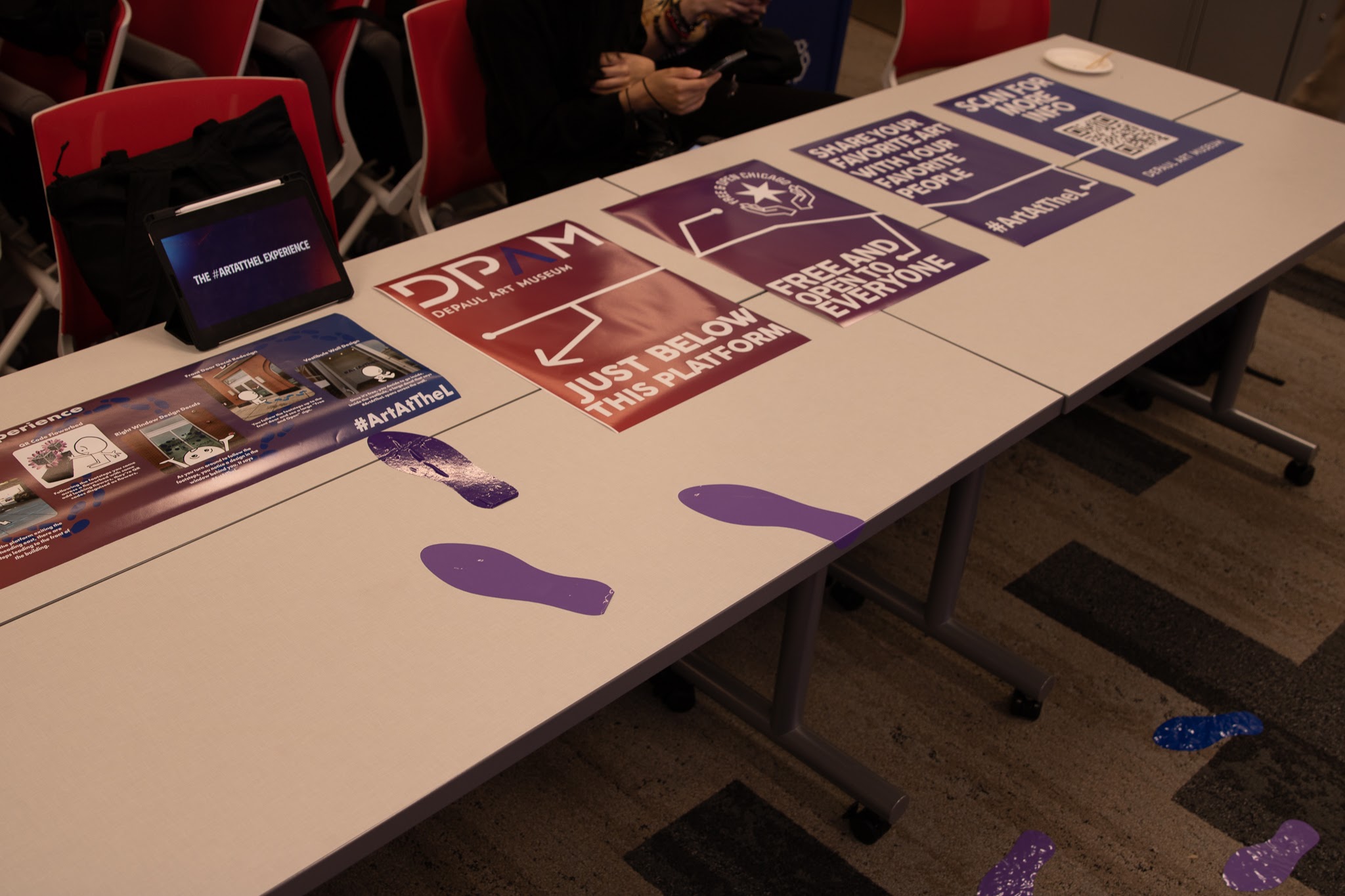
Step into Art
This project team aimed to enhance visitorship to the DePaul Art Museum, by increasing foot traffic and visitor engagement and drawing more people into the museum by capturing their attention through an enticing and interactive exterior. Additionally, the project sought to strengthen the connection between the museum and the community, fostering a sense of belonging and shared ownership. Ultimately, the “Step into Art” project was designed to promote art appreciation and accessibility to a wider audience, ensuring that the DePaul Art Museum remained an inclusive and welcoming space for all who wished to explore and engage with its exhibits.
Related Projects
Acknowledgments
Thank you to DePaul Art Museum staff David Maruzzella, Ionit Behar, and Laura-Caroline de Lara for their consistent support and critical feedback in designing these experiences for DPAM. Thank you to DPAM student interns for their assistance on project specific questions and content.
